CryptoCurrency
Billionaire Ken Griffin Loaded Up on This High-Yield Dividend Stock. Should You?


Dividend stocks aren’t just for income investors. Want proof? Just look at Ken Griffin’s purchases for his Citadel hedge fund in the second quarter of 2024.
Griffin’s net worth is $43 billion. It’s fair to say he doesn’t need dividend income and is by no means an income investor. However, the billionaire loaded up on at least one high-yield dividend stock in Q2.
A big buy of a big pharma
Griffin went on a major buying spree in Q2. He increased Citadel’s stake by 20% or more for 35 of the hedge fund’s top-50 holdings.
Most of those purchases weren’t of high-yield dividend stocks. One notable exception, however, was Griffin’s big buy of a big pharma — Pfizer (NYSE: PFE). The drugmaker’s forward-dividend yield is a lofty 5.8%.
In Q2, Griffin bought 7.89 million additional shares of Pfizer. This increased Citadel’s stake by 63%. Pfizer now ranks as the hedge fund’s 14th-largest position and 12th-largest stock holding (the top-two overall holdings are exchange-traded funds, or ETFs).
Griffin has a long history with Pfizer. He first initiated a position in the pharma stock in 2013’s Q2. Through the years, the billionaire hedge fund manager has increased and decreased Citadel’s stake in Pfizer. Recently, though, he appears to be all aboard the big drugmaker’s bandwagon. Griffin has increased his position in Pfizer for six consecutive quarters.
Why does Griffin like Pfizer?
As far as I know, Griffin hasn’t commented publicly about why he has been aggressively adding to Citadel’s position in Pfizer. However, we can make a few educated guesses.
I’m sure he likes the company’s juicy dividend. To be sure, Griffin isn’t an income investor. But he no doubt recognizes that a dividend yield of nearly 6% gives Pfizer a nice head start on delivering market-beating total returns.
Valuation could be another top consideration for the billionaire investor. Pfizer’s share price remains roughly 50% below its peak set in late 2021. The stock’s forward price-to-earnings ratio is 10.3, much lower than the S&P 500 healthcare sector’s forward-earnings multiple of 19.6.
Griffin is big on diversification. Citadel’s portfolio includes a whopping 5,816 holdings. The addition to the position in Pfizer could have been in part to increase the hedge fund’s exposure to healthcare and, in particular, the pharmaceutical industry.
Ultimately, though, Griffin invests in specific stocks because he thinks they’ll make money. I suspect he likes Pfizer’s long-term growth prospects. Griffin is astute enough to understand the challenges the drugmaker faces, including declining sales of its COVID-19 products and a looming patent cliff with several top-selling drugs losing patent exclusivity. However, he also knows the efforts Pfizer has made to overcome these challenges, such as investing heavily in research and development and making acquisitions to bolster its pipeline.
Should you buy Pfizer stock, too?
No one should buy or sell a given stock solely to follow in the footsteps of a wealthy famous investor like Ken Griffin. However, the trades of successful investors can often provide good ideas to consider. Should you buy Pfizer stock, too?
Growth investors probably won’t find Pfizer super attractive. Although I think the big pharma company will deliver solid growth over the next few years, it likely won’t be enough to keep up with many tech stocks and other high-growth alternatives.
Highly risk-averse investors might want to remain on the sidelines with Pfizer as well. The drugmaker’s pipeline candidates could fail in clinical testing and cause the stock to drop. That’s less of a problem with a big company like Pfizer that has a deep pipeline, but it’s definitely something to keep in mind.
On the other hand, Pfizer could be a good fit for value investors. As previously mentioned, the stock is relatively cheap. If the company’s new products and late-stage pipeline programs fulfill their potential, Pfizer’s share price could rebound nicely over the rest of the decade.
And there’s one group of investors who should absolutely love Pfizer — income investors. Pfizer’s yield is exceptional. The company appears to be in a strong position to keep the dividends flowing. No, dividend stocks aren’t just for income investors. But a high-yield dividend stock with a long track record of success like Pfizer will usually be a better fit for income investors than any other type of investor.
Should you invest $1,000 in Pfizer right now?
Before you buy stock in Pfizer, consider this:
The Motley Fool Stock Advisor analyst team just identified what they believe are the 10 best stocks for investors to buy now… and Pfizer wasn’t one of them. The 10 stocks that made the cut could produce monster returns in the coming years.
Consider when Nvidia made this list on April 15, 2005… if you invested $1,000 at the time of our recommendation, you’d have $744,197!*
Stock Advisor provides investors with an easy-to-follow blueprint for success, including guidance on building a portfolio, regular updates from analysts, and two new stock picks each month. The Stock Advisor service has more than quadrupled the return of S&P 500 since 2002*.
*Stock Advisor returns as of September 30, 2024
Keith Speights has positions in Pfizer. The Motley Fool has positions in and recommends Pfizer. The Motley Fool has a disclosure policy.
Billionaire Ken Griffin Loaded Up on This High-Yield Dividend Stock. Should You? was originally published by The Motley Fool
CryptoCurrency
Dalio Says China’s Leaders Face ‘Whatever-It-Takes’ Moment
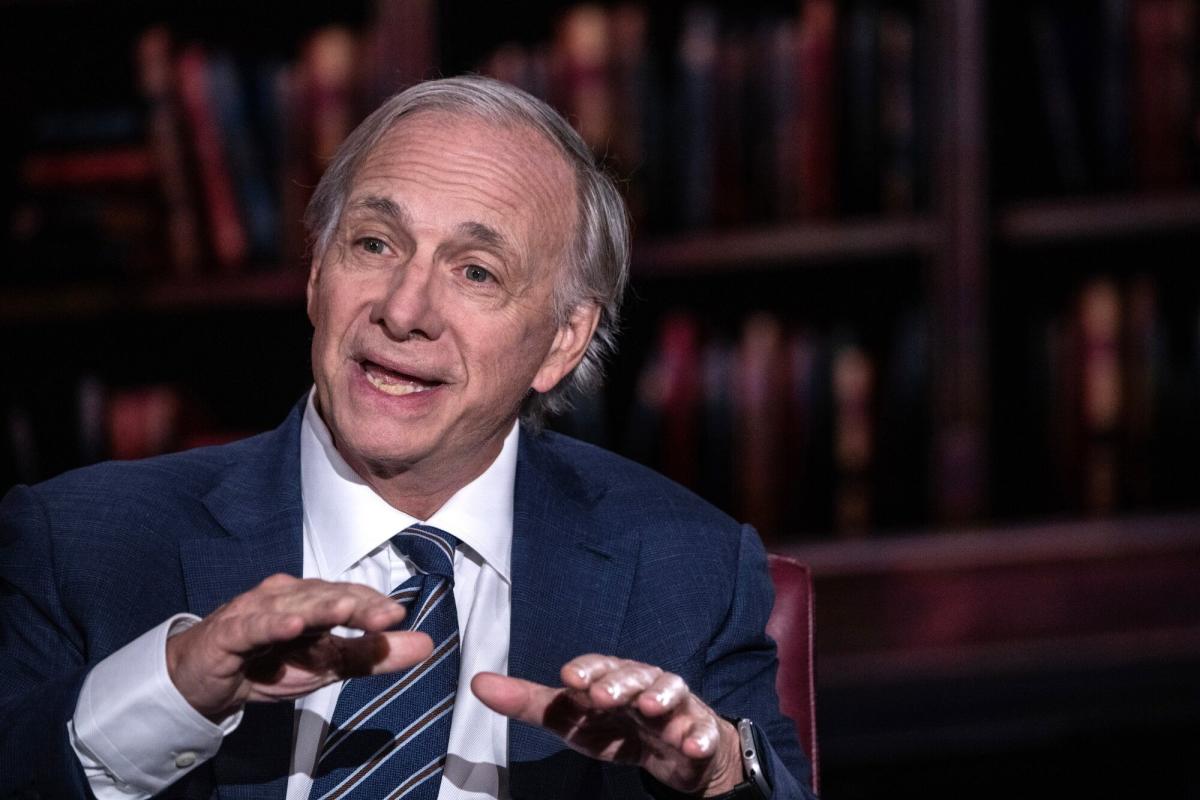
(Bloomberg) — Billionaire investor Ray Dalio says China’s surge of market stimulus will be a historic turning point for the world’s second-largest economy, if policymakers in Beijing deliver “a lot more” than pledged.
Most Read from Bloomberg
The comments came after Chinese stocks posted the biggest rally since 2008 following a policy blitz last week that included lowering interest rates and allowing brokers to tap central bank funding to buy stocks. China’s top leaders have also pledged to support fiscal spending and stabilize the beleaguered property sector.
In a LinkedIn post on Monday, Dalio drew a parallel between President Xi Jinping’s moves and the moment in 2012 when former European Central Bank President Mario Draghi pledged to “do whatever it takes” to preserve the euro. Draghi’s speech eventually helped bring an end to that period’s European debt crisis.
“It was a big week,” wrote Dalio, founder of Bridgewater Associates. “In fact, I think that it was such a big week that it could go down in the market-economic history books,” as long as China’s policymakers “do what it takes, which will require a lot more than what was announced.”
China’s Crossroad
Beijing is at a crossroad in confronting the bursting of a housing bubble and mounting local government debt, said Dalio, who has frequently visited China to meet senior leaders.
The nation could either slip into an economic malaise similar to what Japan experienced in the past, or successfully cut debt and avoid a crisis, the closely followed investor said.
To achieve what he calls a “beautiful deleveraging,” Beijing needs to restructure bad debt, while creating more money to reduce the debt service burden without fueling too much inflation. Such “reflation” moves would encourage risk-taking by making cash less attractive than other assets, he said.
“Doing these things starts to rekindle ‘bottom fishing’ and ‘animal spirits,’” he wrote. “We are clearly seeing that happen now.”
Dalio warned that the deleveraging would be painful because it will destroy wealth and bring about the politically-charged decisions as to who will shoulder the costs of debt losses. A decline in the working-age population and aging demographics compound China’s challenges, he added.
“So, while last week we saw great actions and words that I am sure will be followed by highly stimulative policies that will help a lot and will support asset prices, I think that there are several important other things to keep an eye on to see how well China’s domestic debt-money-economy challenges will be handled,” he wrote.
Most Read from Bloomberg Businessweek
©2024 Bloomberg L.P.
CryptoCurrency
Berkshire Hathaway buys full control of its energy unit
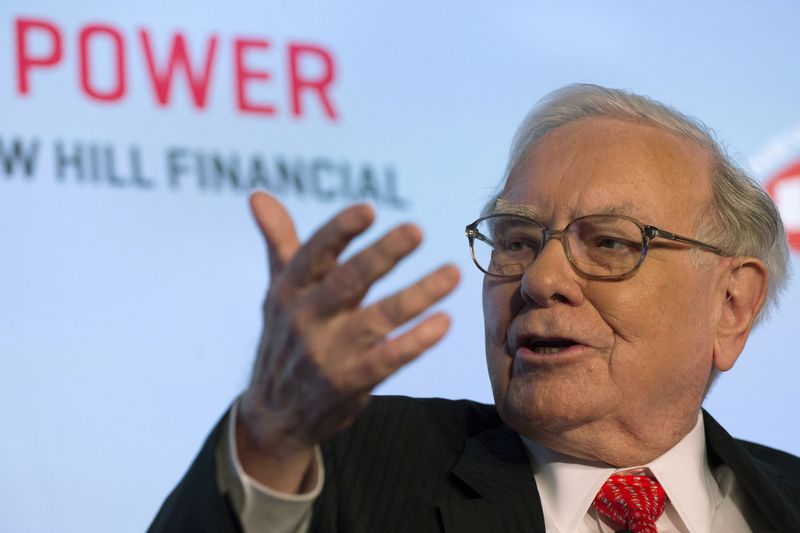
By Jonathan Stempel
(Reuters) -Berkshire Hathaway will take full ownership of Berkshire Hathaway Energy, after Warren Buffett’s conglomerate agreed to acquire the 8% it did not already own from the family of late billionaire philanthropist Walter Scott.
According to a Tuesday regulatory filing, Berkshire Hathaway Energy will pay $2.37 billion in cash for about 4.42 million of its shares.
The Scott family will also swap 1.6 million of the energy unit’s shares for an unspecified number of Berkshire Class B shares. Berkshire Hathaway Energy is also exchanging some debt.
Following the transaction, Omaha, Nebraska-based Berkshire will own 100% of the energy unit, up from 92% now.
The transaction is expected to be completed after regulatory approvals in the current quarter. Its total value is unclear because the energy unit’s shares are not publicly traded.
Berkshire Hathaway Energy declined additional comment, while Berkshire did not immediately respond to a request for comment.
Scott, an Omaha native, was a longtime Berkshire director and Buffett friend who died in Sept. 2021 at age 90.
Analysts had expected Berkshire to buy out Scott’s family, though Edward Jones’ analyst James Shanahan said it took longer than expected.
In June 2022, Berkshire Vice Chairman Greg Abel, who led Berkshire Hathaway Energy for a decade, sold his 1% stake to Berkshire for $870 million. That suggested that the Scott family’s stake was worth nearly $7 billion at the time.
But the energy unit’s PacifiCorp utility has since faced many lawsuits from homeowners and business owners who blame it for causing wildfires in Oregon and northern California in 2020.
The purchase also lets Berkshire spend some of its cash, which totaled $276.9 billion as of June 30.
“It makes sense,” said Cathy Seifert, an analyst at CFRA Research. “Berkshire has a significant pile of cash to deploy, at a time U.S. Treasury yields are falling and likely to continue to fall.”
She said the energy unit nonetheless “has had its fair amount of challenges since Abel sold his stake, not the least of which is the wildfire litigation.”
Berkshire Hathaway Energy owns energy, utility and pipeline businesses, and one of the largest U.S. residential real estate brokerages.
Buffett’s conglomerate originally bought a 76% stake in 2000, when the unit was known as MidAmerican Energy. The unit adopted the Berkshire Hathaway Energy name in 2014.
Berkshire also owns dozens of other businesses, including the BNSF railroad and Geico car insurance, and common stocks including Apple.
Abel, 62, is expected to eventually succeed Buffett, 94, as Berkshire’s chief executive.
(Reporting by Jonathan Stempel in New York; Editing by Nick Zieminski)
CryptoCurrency
Walt Bettinger helped Schwab survive a crisis. Now he is stepping down.
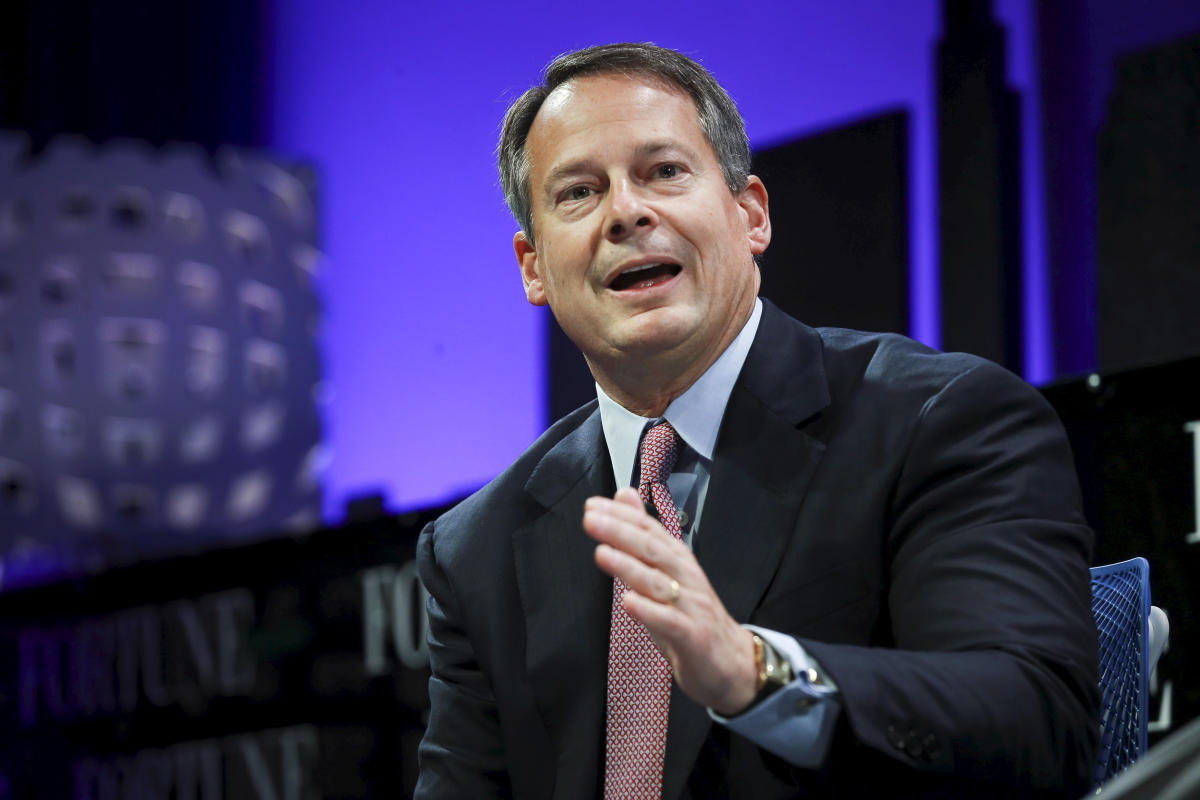
Charles Schwab (SCHW) CEO Walt Bettinger is retiring as boss of the largest publicly-traded brokerage after helping the money manager survive a searing crisis in 2023.
The company announced the decision Tuesday, saying in a statement that the 64-year executive will step down at the end of the year and be replaced by Schwab President Rick Wurster in January.
Bettinger has been in charge since 2008. He joined Schwab in 1995 when the asset manager acquired his firm, The Hampton Company.
“Serving the clients, employees and stockholders of Schwab as CEO for the past 16 years has been the honor and privilege of my more than 40-year business career,” Bettinger said in the statement.
The firm’s executive co-chairman Charles R. Schwab, who founded the company that bears his name in 1971, added that “Rick Wurster is ideally prepared to assume the duties as our next CEO” and “possesses all the attributes to be a successful CEO.”
Bettinger will continue serving as executive co-chairman of the board of directors along with Charles R. Schwab.
Schwab’s stock fell more than 1% following the CEO announcement as investors mulled the shift. Year to date, the stock is down more than 7%.
During Bettinger’s time as CEO, the Westlake, Texas-based company expanded its assets under management ninefold, to $9.74 trillion, and acquired rival TD Ameritrade.
It also joined other rivals in offering zero commission trading for stocks, options and exchange traded funds, as part of a seismic move by the money management industry to lower the costs of entry for customers.
But last year was perhaps Bettinger’s most challenging as CEO as Schwab struggled during a banking crisis that tested a number of financial institutions across the US and resulted in several sizable failures.
Interest rate hikes from the Federal Reserve pushed down the value of Schwab’s debt securities portfolio just as customers in its cash sweep program began moving their money to higher-yielding investments.
After the dramatic failure of Silicon Valley Bank in March 2023, investors punished Schwab as they scrutinized other institutions showing any signs of weakness.
Bettinger offered assurances on CNBC and told The Wall Street Journal the company would still operate even if it lost most of its deposits.
The company then cut employees and office space, just as it was moving millions of TD Ameritrade customers to its platform. Schwab’s annual profits, meanwhile, fell 29%.
This year, Schwab has made steps to move further outside of traditional banking.
During the company’s last earnings call in July, Bettinger indicated that the company planned to increase its use of third-party banks in order to shrink its overall balance sheet to reduce its capital needs that called for borrowing during times of stress.
“These various actions should lead, again over time, to a bank that is somewhat smaller than our bank has been in recent years, while retaining the ability to meet our clients’ banking needs, lower our capital intensity and importantly protect the economics we are able to generate from owning a bank,” Bettinger said at the time.
The company is also looking to offer customers more products within the alternative investment space and rolled out an alternatives platform in May.
“Walt’s successful tenure as CEO saw the most significant growth in the company’s history in terms of clients, assets, revenue, profits, and market capitalization,” Charles R. Schwab said in the company’s statement.
“He has earned the right to determine the timing of his retirement as CEO.”
David Hollerith is a senior reporter for Yahoo Finance covering banking, crypto, and other areas in finance.
Click here for in-depth analysis of the latest stock market news and events moving stock prices.
Read the latest financial and business news from Yahoo Finance
CryptoCurrency
Analysis-Futures in Japan face hangover from BOJ’s bond-buying binge
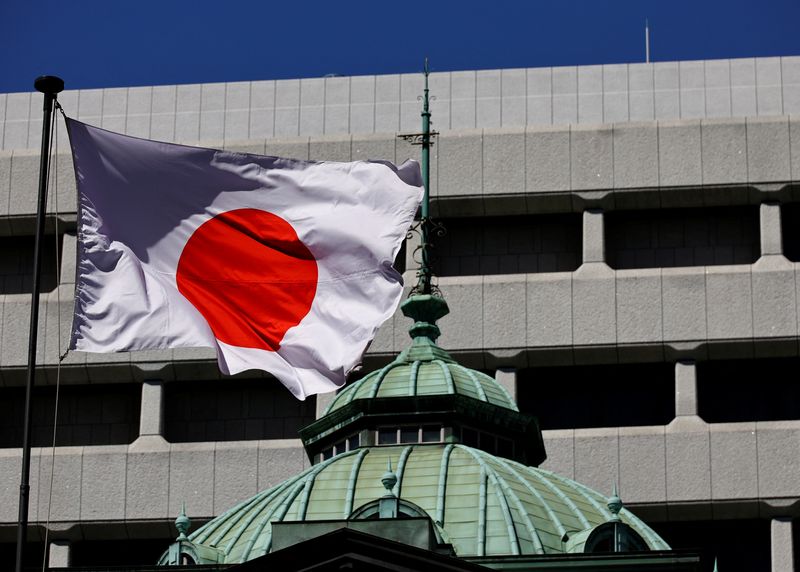
By Junko Fujita and Tom Westbrook
TOKYO/SINGAPORE (Reuters) – Japan’s $9 trillion bond market is bracing for disruption as a shortage of paper caused by the central bank’s massive buying is expected to hit the settlement of derivatives used by investors and the dealers who underwrite the nation’s debt sales.
Decades of fighting deflation drove the Bank of Japan (BOJ) into asset purchases and made it the majority owner of the country’s national debt, with a balance sheet bigger than the $4 trillion economy and five times the size of the U.S. Federal Reserve’s, relative to gross domestic product.
That has kept yields down and made the Japanese market unattractive to investors, leaving its bonds illiquid and unreliable as a benchmark for interest rates.
Now as the BOJ pares back its balance sheet towards a normalisation of markets, the long-awaited revival of trading in the debt pool is proving a slow and bumpy process.
A test looms in the futures market from December when 10-year contracts will be linked to the government bond #366 tranche that is 95% owned by the BOJ.
Participants say the bond’s scarcity in the open market will interfere with buying the so-called ‘cheapest-to-deliver’ bonds to settle derivatives contracts at maturity, crucial for the market to trade smoothly and price with precision.
“The lack of the cheapest-to-deliver bonds makes it hard for investors to hedge risks for rising rates,” said Keisuke Tsuruta, senior fixed income strategist at Mitsubishi UFJ Morgan Stanley Securities. “This makes overall trading difficult.”
Tsuruta said this will affect not just trade and speculation but also government bond auctions, since primary dealers who bid at these auctions mostly use futures to offset their exposure.
With the BOJ having embarked on a rate hike path, investors are also seeking the cheapest bonds to settle short positions in futures, and distortions in the derivatives market would hurt them.
A shortage of such bonds will imply “hedging with futures is not functioning,” said Masayuki Koguchi, executive chief fund manager at Mitsubishi UFJ Asset Management.
DYSFUNCTIONING DERIVATIVES
Japanese government bond (JGB) futures are listed on the Osaka Stock Exchange. Benchmark 10-year futures, which are contracts that run for three months, are used to speculate on where yields will be in the future and are linked to an underlying cash bond.
They are the deepest part of the market and vital for participants, from hedge funds to corporations, who want to bet on interest rate movements or use the market to offset an exposure.
Unlike with stock futures, sellers of JGB futures have to physically deliver bonds at the end of a contract, rather than merely settle the difference in prices.
The rules allow sellers to deliver bonds with between seven and 11 years to maturity against 10-year JGB futures, and under the conversion factor the exchange uses, government bond #366 will become the cheapest-to-deliver in late December, for contracts that mature in March.
That tranche was the 10-year benchmark in 2022 when Japan’s central bank was buying billions in bonds to defend a 0.25% yield cap against speculative short sellers.
The result is that BOJ owns more than 95% of #366, which will leave futures sellers scrambling to get hold of it or go for more expensive bonds to settle their deals.
The situation is reminiscent of the distortion in JGB futures in June 2022, when a surprise BOJ intervention at the cheapest-to-deliver tenor caught dealers off guard. Futures collapsed along with bidding at JGB auctions, which turned in some of the poorest auction results in more than 30 years.
Then, the BOJ relaxed rules to make it easier to borrow bonds and, to be sure, a similar move – or if the finance ministry reopened the tranche to sell more debt – would reduce pressure on the market. But that, too, would highlight its fragility.
“This situation reflects the adverse effect of the BOJ’s easy monetary policy,” said Miki Den, a senior Japan rate strategist at SMBC Nikko Securities.
It is also likely to persist next year as subsequent tranches are also heavily owned by the BOJ. A bearish outlook for bonds is keeping large JGB traders out of the cash market too, making it likely normalcy will come to Japan’s debt markets only over an extended time-frame.
“They’re basically trying to unwind, let’s call it the last decade, decade and a half or so of policy,” said Norman Villamin, chief strategist at Union Bancaire Privée.
“When you put it in the context of these decade-plus types of time horizons … normalisation which has been under way for about two years (is) not particularly out of kilter with those timelines.”
(Reporting by Junko Fujita and Tom Westbrook; Editing by Vidya Ranganathan and Muralikumar Anantharaman)
CryptoCurrency
These 2 Vanguard ETFs Are a Retiree’s Best Friend
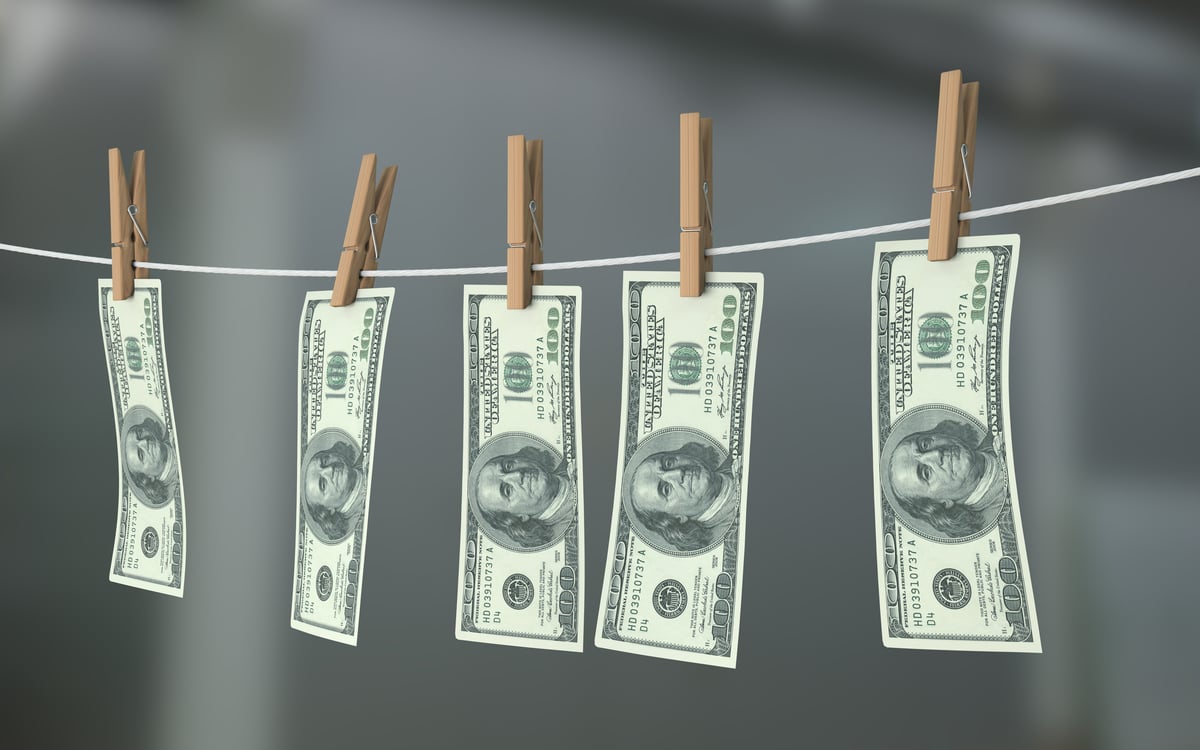
Not all investors are the same. What is appropriate for investors in their 20s is unlikely to fit the goals and risk tolerance for investors in their 60s, 70s, or 80s. Similarly, not all retirees are the same. Some are focused squarely on income generation, while others might need a more aggressive mix of income and growth.
Here, I’ll explore two Vanguard exchange-traded funds (ETFs) that provide a helpful mix of both income and growth.
Vanguard Real Estate ETF
Let’s start with the Vanguard Real Estate ETF (NYSEMKT: VNQ). This fund retirees a cheap and easy way to invest in real estate investment trusts (REITs). REITs are companies that own, finance, or operate real estate properties that generate income. By law, REITs must invest at least 75% of their assets into real estate and distribute 90% or more of their annual-taxable income to shareholders.
There are many varieties of REITs. For example, Public Storage owns and operates self-storage facilities. Meanwhile, VICI Properties operates leisure, gaming, and hospitality properties, including iconic locations on the Las Vegas strip like Caesars Palace and The Venetian.
This Vanguard fund counts both of those REITs among its holdings, along with many others. The fund could be particularly appealing to retirees who don’t have direct exposure to real estate — in other words, for those who do not own a house, apartment, condo, etc. By investing in this fund, retirees gain some exposure to the real estate market and can benefit from rising prices while not taking on the risk and costs of directly owning a real estate property.
The fund has a current dividend yield of 3.6% and a low expense ratio of 0.12%. Over the past 10 years, the fund has achieved a compound annual growth rate (CAGR) of 7.2%, meaning that $10,000 invested in 2014 would be worth $20,350 today.
Vanguard Utilities ETF
Next up is the Vanguard Utilities ETF (NYSEMKT: VPU). What’s compelling about this fund is its focus on a commonly underappreciated sector. Simply put, the utility industry is critical to the American economy. However, given its nature as a highly regulated, slow-growth industry, it’s often overlooked by investors.
Yet, that’s changing, especially when it comes to electricity producers. That’s because the world is desperate for more power. In particular, advancements in artificial intelligence (AI) and electrical vehicles (EVs) have led to greater demands on the power grid. In response, some utility providers are boosting supply by opening new facilities or reopening shuttered power plants.
In any event, what retirees should know is this this Vanguard fund is a great way to capitalize on such trends. The ETF boasts holdings in large regional utilities, including Duke Energy, Southern Company, and Dominion Energy, among many others.
The fund’s low expense ratio of 0.10% means that investors only pay $10 per year for every $10,000 invested in the fund. Moreover, its dividend yield of 2.8% provides a solid amount of annual payments for income-seeking retirees.
Finally, the fund’s 10-year performance is excellent. It has generated a 10-year CAGR of 10.1%, meaning a $10,000 investment made in 2014 would have grown to $26,100 today.
In summary, these two ETFs offer retirees a blend of income and growth — something that’s worth considering for many in this stage of life.
Should you invest $1,000 in Vanguard World Fund – Vanguard Utilities ETF right now?
Before you buy stock in Vanguard World Fund – Vanguard Utilities ETF, consider this:
The Motley Fool Stock Advisor analyst team just identified what they believe are the 10 best stocks for investors to buy now… and Vanguard World Fund – Vanguard Utilities ETF wasn’t one of them. The 10 stocks that made the cut could produce monster returns in the coming years.
Consider when Nvidia made this list on April 15, 2005… if you invested $1,000 at the time of our recommendation, you’d have $744,197!*
Stock Advisor provides investors with an easy-to-follow blueprint for success, including guidance on building a portfolio, regular updates from analysts, and two new stock picks each month. The Stock Advisor service has more than quadrupled the return of S&P 500 since 2002*.
*Stock Advisor returns as of September 30, 2024
Jake Lerch has no position in any of the stocks mentioned. The Motley Fool has positions in and recommends Vanguard Real Estate ETF. The Motley Fool recommends Dominion Energy, Duke Energy, and Vici Properties. The Motley Fool has a disclosure policy.
These 2 Vanguard ETFs Are a Retiree’s Best Friend was originally published by The Motley Fool
CryptoCurrency
Taiwan Semiconductor’s 2-Nm Breakthrough Puts Taiwan a Decade Ahead of China’s Semiconductor Industry: Report
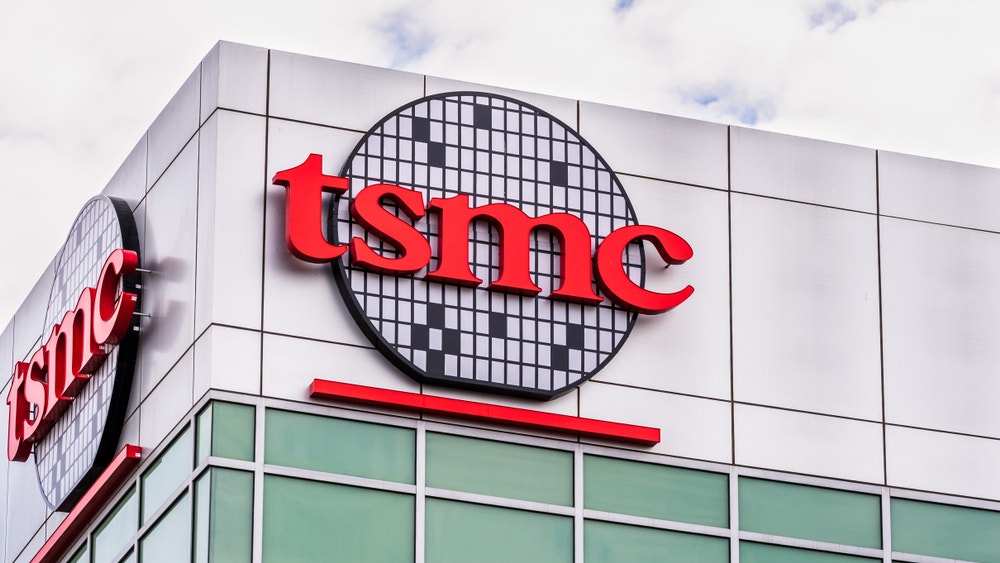
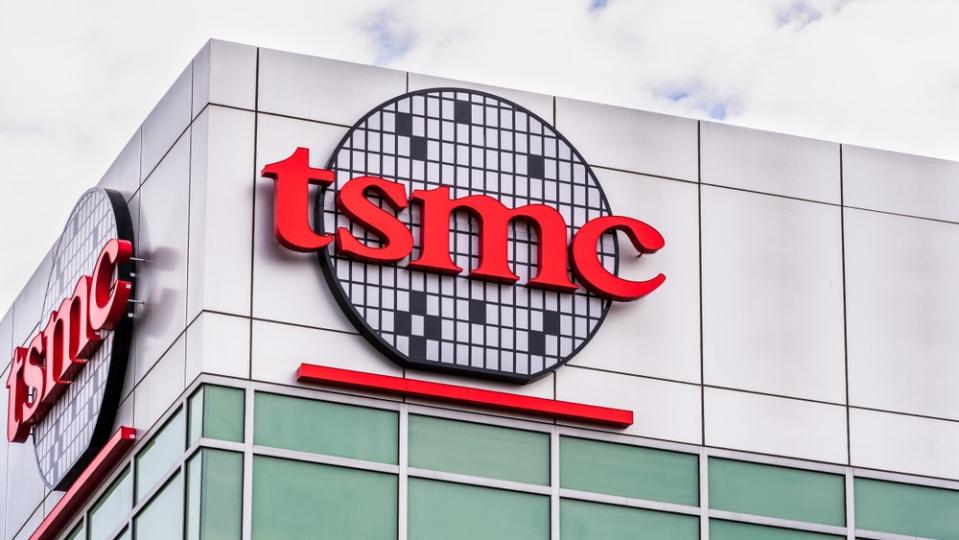
Taiwan Semiconductor Manufacturing Co (NYSE:TSM) has multiple reasons to celebrate; the latest is China’s comment on its technology moat.
National Science and Technology Council (NSTC) Minister Wu Cheng-wen said China lags behind Taiwan Semiconductor’s advanced technology semiconductor manufacturing by at least a decade, the Taipei Times cites from a Legislative Yuan Education and Culture Committee meeting Monday.
Cheng-wen credited the Taiwanese contract chipmaker’s lead to its progress to 2 nanometers.
Also Read: Synopsys Partners With Taiwan Semi To Power Next-Gen AI Chip Innovations
Prior reports indicated Taiwan’s three-year lead over China in chip manufacturing. Taiwan Semiconductor plans to commercialize 2-nm chips by 2025.
Chinese tech industry barometer Alibaba Group Holding (NYSE:BABA) has maintained Nvidia Corp’s (NASDAQ:NVDA) lead over domestic technology and recently collaborated with the U.S. chip designer.
Recent reports indicated that China urged its firms to tap domestic artificial intelligence (AI) chips from companies like Cambricon Technologies Corp and Huawei Technologies Co instead of Nvidia. China’s move marks retaliation against the U.S.’s advanced semiconductor embargo on the Asian counterpart, citing national security concerns.
Meanwhile, Taiwan Semiconductor continues to score wins as a critical supplier to Nvidia and Apple Inc (NASDAQ:AAPL). Hyperscalars from Microsoft Corp (NASDAQ:MSFT) remain invested in their AI ambitions, signaling higher demand for Nvidia chips. The smartphone industry is also likely to recover, further helped by the integration of AI features.
Will Taiwan Semiconductor Stock Go Up?
When trying to assess whether or not Taiwan Semiconductor will trade higher from current levels, it’s a good idea to take a look at analyst forecasts.
Wall Street analysts have an average 12-month price target of $234.0 on Taiwan Semiconductor. The Street high target is currently at $250.0 and the Street low target is $210.0. Of all the analysts covering Taiwan Semiconductor, 5 have positive ratings, no one has neutral ratings and no one has negative ratings.
In the last month, no analysts have adjusted price targets. Here’s a look at recent price target changes [Analyst Ratings]. Benzinga also tracks Wall Street’s most accurate analysts. Check out how analysts covering Taiwan Semiconductor have performed in recent history.
Stocks don’t move in a straight line. The average stock market return is approximately 10% per year. Taiwan Semiconductor is 71.05% up year-to-date. The average analyst price target suggests the stock could have further upside ahead.
For a broad overview of everything you need to know about Taiwan Semiconductor, visit here. If you want to go above and beyond, there’s no better tool to help you do just that than Benzinga Pro. Start your free trial today.
Price Action: TSM stock is up 0.93% at $175.28 premarket at last check Tuesday.
Also Read:
Photo by Sundry Photography on Shutterstock
Up Next: Transform your trading with Benzinga Edge’s one-of-a-kind market trade ideas and tools. Click now to access unique insights that can set you ahead in today’s competitive market.
Get the latest stock analysis from Benzinga?
This article Taiwan Semiconductor’s 2-Nm Breakthrough Puts Taiwan a Decade Ahead of China’s Semiconductor Industry: Report originally appeared on Benzinga.com
© 2024 Benzinga.com. Benzinga does not provide investment advice. All rights reserved.
-

 Womens Workouts1 week ago
Womens Workouts1 week ago3 Day Full Body Women’s Dumbbell Only Workout
-

 Technology2 weeks ago
Technology2 weeks agoWould-be reality TV contestants ‘not looking real’
-

 Science & Environment2 weeks ago
Science & Environment2 weeks agoHow to unsnarl a tangle of threads, according to physics
-

 Science & Environment2 weeks ago
Science & Environment2 weeks ago‘Running of the bulls’ festival crowds move like charged particles
-

 Science & Environment2 weeks ago
Science & Environment2 weeks agoHyperelastic gel is one of the stretchiest materials known to science
-

 Science & Environment2 weeks ago
Science & Environment2 weeks agoMaxwell’s demon charges quantum batteries inside of a quantum computer
-

 Science & Environment2 weeks ago
Science & Environment2 weeks agoHow to wrap your mind around the real multiverse
-

 News2 weeks ago
News2 weeks agoOur millionaire neighbour blocks us from using public footpath & screams at us in street.. it’s like living in a WARZONE – WordupNews
-

 Science & Environment2 weeks ago
Science & Environment2 weeks agoSunlight-trapping device can generate temperatures over 1000°C
-

 Science & Environment2 weeks ago
Science & Environment2 weeks agoLiquid crystals could improve quantum communication devices
-

 Science & Environment2 weeks ago
Science & Environment2 weeks agoITER: Is the world’s biggest fusion experiment dead after new delay to 2035?
-

 Science & Environment2 weeks ago
Science & Environment2 weeks agoPhysicists are grappling with their own reproducibility crisis
-

 Science & Environment2 weeks ago
Science & Environment2 weeks agoQuantum ‘supersolid’ matter stirred using magnets
-

 News2 weeks ago
News2 weeks agoYou’re a Hypocrite, And So Am I
-

 Science & Environment2 weeks ago
Science & Environment2 weeks agoWhy this is a golden age for life to thrive across the universe
-

 Sport2 weeks ago
Sport2 weeks agoJoshua vs Dubois: Chris Eubank Jr says ‘AJ’ could beat Tyson Fury and any other heavyweight in the world
-

 Science & Environment2 weeks ago
Science & Environment2 weeks agoQuantum forces used to automatically assemble tiny device
-

 Science & Environment2 weeks ago
Science & Environment2 weeks agoCaroline Ellison aims to duck prison sentence for role in FTX collapse
-

 Science & Environment2 weeks ago
Science & Environment2 weeks agoNuclear fusion experiment overcomes two key operating hurdles
-

 Science & Environment2 weeks ago
Science & Environment2 weeks agoTime travel sci-fi novel is a rip-roaringly good thought experiment
-

 Science & Environment2 weeks ago
Science & Environment2 weeks agoLaser helps turn an electron into a coil of mass and charge
-

 Science & Environment2 weeks ago
Science & Environment2 weeks agoNerve fibres in the brain could generate quantum entanglement
-

 News2 weeks ago
News2 weeks agoIsrael strikes Lebanese targets as Hizbollah chief warns of ‘red lines’ crossed
-

 CryptoCurrency2 weeks ago
CryptoCurrency2 weeks agoCardano founder to meet Argentina president Javier Milei
-

 Science & Environment1 week ago
Science & Environment1 week agoMeet the world's first female male model | 7.30
-
News2 weeks ago
the pick of new debut fiction
-

 Womens Workouts2 weeks ago
Womens Workouts2 weeks agoBest Exercises if You Want to Build a Great Physique
-

 News1 week ago
News1 week agoWhy Is Everyone Excited About These Smart Insoles?
-

 CryptoCurrency2 weeks ago
CryptoCurrency2 weeks agoEthereum is a 'contrarian bet' into 2025, says Bitwise exec
-

 News2 weeks ago
News2 weeks ago▶️ Media Bias: How They Spin Attack on Hezbollah and Ignore the Reality
-

 Science & Environment2 weeks ago
Science & Environment2 weeks agoA slight curve helps rocks make the biggest splash
-
Business2 weeks ago
JPMorgan in talks to take over Apple credit card from Goldman Sachs
-

 Science & Environment2 weeks ago
Science & Environment2 weeks agoQuantum time travel: The experiment to ‘send a particle into the past’
-

 Science & Environment2 weeks ago
Science & Environment2 weeks agoWhy we need to invoke philosophy to judge bizarre concepts in science
-

 CryptoCurrency2 weeks ago
CryptoCurrency2 weeks agoBitcoin miners steamrolled after electricity thefts, exchange ‘closure’ scam: Asia Express
-

 CryptoCurrency2 weeks ago
CryptoCurrency2 weeks agoDZ Bank partners with Boerse Stuttgart for crypto trading
-

 CryptoCurrency2 weeks ago
CryptoCurrency2 weeks agoLow users, sex predators kill Korean metaverses, 3AC sues Terra: Asia Express
-

 CryptoCurrency2 weeks ago
CryptoCurrency2 weeks agoBitcoin bulls target $64K BTC price hurdle as US stocks eye new record
-

 Womens Workouts2 weeks ago
Womens Workouts2 weeks agoEverything a Beginner Needs to Know About Squatting
-

 News1 week ago
News1 week agoFour dead & 18 injured in horror mass shooting with victims ‘caught in crossfire’ as cops hunt multiple gunmen
-

 Womens Workouts1 week ago
Womens Workouts1 week ago3 Day Full Body Toning Workout for Women
-

 Travel1 week ago
Travel1 week agoDelta signs codeshare agreement with SAS
-

 Politics1 week ago
Politics1 week agoHope, finally? Keir Starmer’s first conference in power – podcast | News
-

 Sport2 weeks ago
Sport2 weeks agoUFC Edmonton fight card revealed, including Brandon Moreno vs. Amir Albazi headliner
-

 Technology2 weeks ago
Technology2 weeks agoiPhone 15 Pro Max Camera Review: Depth and Reach
-

 News2 weeks ago
News2 weeks agoBrian Tyree Henry on voicing young Megatron, his love for villain roles
-

 Health & fitness2 weeks ago
Health & fitness2 weeks agoThe maps that could hold the secret to curing cancer
-

 CryptoCurrency2 weeks ago
CryptoCurrency2 weeks agoDorsey’s ‘marketplace of algorithms’ could fix social media… so why hasn’t it?
-

 CryptoCurrency2 weeks ago
CryptoCurrency2 weeks agoRedStone integrates first oracle price feeds on TON blockchain
-

 CryptoCurrency2 weeks ago
CryptoCurrency2 weeks agoBlockdaemon mulls 2026 IPO: Report
-

 CryptoCurrency2 weeks ago
CryptoCurrency2 weeks agoCoinbase’s cbBTC surges to third-largest wrapped BTC token in just one week
-

 Science & Environment2 weeks ago
Science & Environment2 weeks agoA new kind of experiment at the Large Hadron Collider could unravel quantum reality
-

 Science & Environment2 weeks ago
Science & Environment2 weeks agoHow one theory ties together everything we know about the universe
-

 Health & fitness2 weeks ago
Health & fitness2 weeks agoThe secret to a six pack – and how to keep your washboard abs in 2022
-

 Science & Environment2 weeks ago
Science & Environment2 weeks agoBeing in two places at once could make a quantum battery charge faster
-

 CryptoCurrency2 weeks ago
CryptoCurrency2 weeks agoCrypto scammers orchestrate massive hack on X but barely made $8K
-

 Science & Environment2 weeks ago
Science & Environment2 weeks agoTiny magnet could help measure gravity on the quantum scale
-

 Science & Environment2 weeks ago
Science & Environment2 weeks agoFuture of fusion: How the UK’s JET reactor paved the way for ITER
-

 Science & Environment2 weeks ago
Science & Environment2 weeks agoHow do you recycle a nuclear fusion reactor? We’re about to find out
-

 CryptoCurrency2 weeks ago
CryptoCurrency2 weeks agoTelegram bot Banana Gun’s users drained of over $1.9M
-

 CryptoCurrency2 weeks ago
CryptoCurrency2 weeks agoVonMises bought 60 CryptoPunks in a month before the price spiked: NFT Collector
-

 CryptoCurrency2 weeks ago
CryptoCurrency2 weeks agoSEC asks court for four months to produce documents for Coinbase
-

 CryptoCurrency2 weeks ago
CryptoCurrency2 weeks ago‘No matter how bad it gets, there’s a lot going on with NFTs’: 24 Hours of Art, NFT Creator
-
Business2 weeks ago
How Labour donor’s largesse tarnished government’s squeaky clean image
-

 News2 weeks ago
News2 weeks agoBrian Tyree Henry on voicing young Megatron, his love for villain roles
-

 Womens Workouts2 weeks ago
Womens Workouts2 weeks agoHow Heat Affects Your Body During Exercise
-

 Womens Workouts2 weeks ago
Womens Workouts2 weeks agoKeep Your Goals on Track This Season
-

 Science & Environment2 weeks ago
Science & Environment2 weeks agoCNN TÜRK – 🔴 Canlı Yayın ᴴᴰ – Canlı TV izle
-

 Technology1 week ago
Technology1 week agoRobo-tuna reveals how foldable fins help the speedy fish manoeuvre
-

 Science & Environment1 week ago
Science & Environment1 week agoX-rays reveal half-billion-year-old insect ancestor
-

 News2 weeks ago
News2 weeks agoChurch same-sex split affecting bishop appointments
-

 Technology2 weeks ago
Technology2 weeks agoFivetran targets data security by adding Hybrid Deployment
-

 Politics2 weeks ago
Politics2 weeks agoLabour MP urges UK government to nationalise Grangemouth refinery
-

 CryptoCurrency2 weeks ago
CryptoCurrency2 weeks agoLouisiana takes first crypto payment over Bitcoin Lightning
-

 CryptoCurrency2 weeks ago
CryptoCurrency2 weeks ago$12.1M fraud suspect with ‘new face’ arrested, crypto scam boiler rooms busted: Asia Express
-

 Science & Environment2 weeks ago
Science & Environment2 weeks agoUK spurns European invitation to join ITER nuclear fusion project
-

 CryptoCurrency2 weeks ago
CryptoCurrency2 weeks agoDecentraland X account hacked, phishing scam targets MANA airdrop
-

 CryptoCurrency2 weeks ago
CryptoCurrency2 weeks agoBitcoin price hits $62.6K as Fed 'crisis' move sparks US stocks warning
-

 CryptoCurrency2 weeks ago
CryptoCurrency2 weeks agoCertiK Ventures discloses $45M investment plan to boost Web3
-

 CryptoCurrency2 weeks ago
CryptoCurrency2 weeks agoBeat crypto airdrop bots, Illuvium’s new features coming, PGA Tour Rise: Web3 Gamer
-

 CryptoCurrency2 weeks ago
CryptoCurrency2 weeks ago‘Silly’ to shade Ethereum, the ‘Microsoft of blockchains’ — Bitwise exec
-

 CryptoCurrency2 weeks ago
CryptoCurrency2 weeks agoVitalik tells Ethereum L2s ‘Stage 1 or GTFO’ — Who makes the cut?
-

 CryptoCurrency2 weeks ago
CryptoCurrency2 weeks agoEthereum falls to new 42-month low vs. Bitcoin — Bottom or more pain ahead?
-
Business2 weeks ago
Thames Water seeks extension on debt terms to avoid renationalisation
-
Politics2 weeks ago
‘Appalling’ rows over Sue Gray must stop, senior ministers say | Sue Gray
-

 News2 weeks ago
News2 weeks agoBrian Tyree Henry on his love for playing villains ahead of “Transformers One” release
-
Politics2 weeks ago
UK consumer confidence falls sharply amid fears of ‘painful’ budget | Economics
-

 Womens Workouts2 weeks ago
Womens Workouts2 weeks agoWhich Squat Load Position is Right For You?
-

 News6 days ago
News6 days agoUS Newspapers Diluting Democratic Discourse with Political Bias
-

 Technology2 weeks ago
Technology2 weeks agoIs carbon capture an efficient way to tackle CO2?
-

 Politics2 weeks ago
Politics2 weeks agoTrump says he will meet with Indian Prime Minister Narendra Modi next week
-

 Science & Environment2 weeks ago
Science & Environment2 weeks agoSingle atoms captured morphing into quantum waves in startling image
-

 Technology2 weeks ago
Technology2 weeks agoCan technology fix the ‘broken’ concert ticketing system?
-

 Fashion Models2 weeks ago
Fashion Models2 weeks agoMixte
-

 Science & Environment2 weeks ago
Science & Environment2 weeks agoHow Peter Higgs revealed the forces that hold the universe together
-

 CryptoCurrency2 weeks ago
CryptoCurrency2 weeks ago2 auditors miss $27M Penpie flaw, Pythia’s ‘claim rewards’ bug: Crypto-Sec
-

 CryptoCurrency2 weeks ago
CryptoCurrency2 weeks agoJourneys: Robby Yung on Animoca’s Web3 investments, TON and the Mocaverse
-

 CryptoCurrency2 weeks ago
CryptoCurrency2 weeks ago‘Everything feels like it’s going to shit’: Peter McCormack reveals new podcast
-

 Science & Environment2 weeks ago
Science & Environment2 weeks agoA tale of two mysteries: ghostly neutrinos and the proton decay puzzle
-

 CryptoCurrency2 weeks ago
CryptoCurrency2 weeks agoSEC sues ‘fake’ crypto exchanges in first action on pig butchering scams

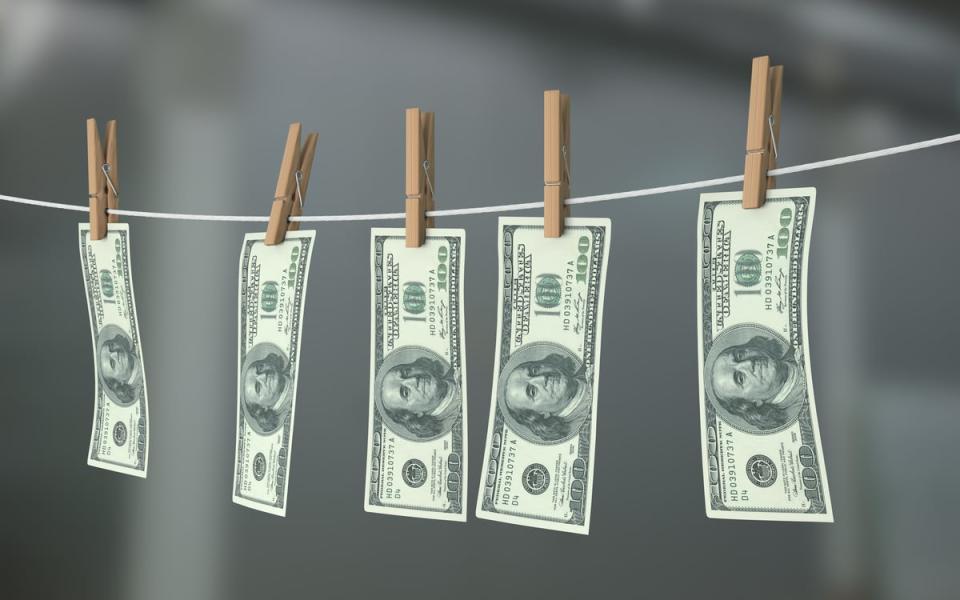
You must be logged in to post a comment Login